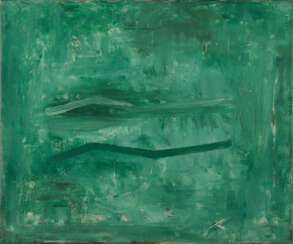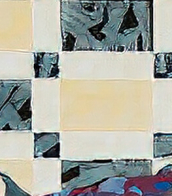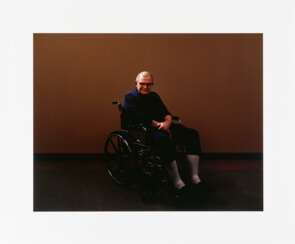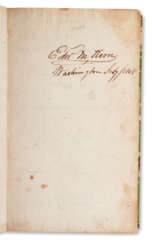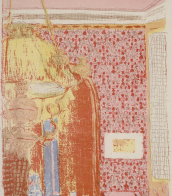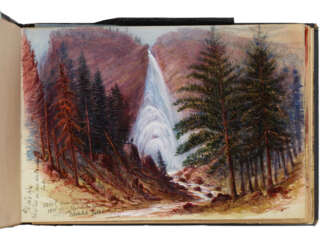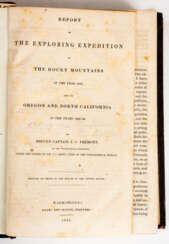oregon

Taryn Simon is an American photographer. She is known for her conceptual photography, which explores themes of power, control, and the hidden structures that shape our world.
Simon's work often involves extensive research and collaboration with experts in various fields. Her photographs are often large-scale and meticulously composed, featuring subjects ranging from political figures and cultural icons to everyday objects and places.
Some of Simon's most famous projects include "An American Index of the Hidden and Unfamiliar," which documented hidden sites and organizations throughout the United States, and "Contraband," a series of photographs of items seized by customs officials at JFK International Airport.
Simon's work has been exhibited in major museums and galleries around the world, and she has received numerous awards and honors for her contributions to the field of photography. She continues to produce new work and is widely regarded as one of the most important photographers of her generation.
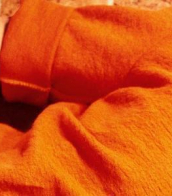

Ammi Phillips was a prolific American itinerant portrait painter active from the mid 1810s to the early 1860s in Connecticut, Massachusetts, and New York. His artwork is identified as folk art, primitive art, provincial art, and itinerant art without consensus among scholars, pointing to the enigmatic nature of his work and life. He is attributed to over eight hundred paintings, although only eleven are signed. While his paintings are formulaic in nature, Phillips paintings were under constant construction, evolving as he added or discarded what he found successful, while taking care to add personal details that spoke to the identity of those who hired him. He is most famous for his portraits of children in red, although children only account for ten percent of his entire body of work. The most well known of this series, Girl in Red Dress with Cat and Dog, would be sold for one million dollars, a first for folk art. His paintings hung mostly unidentified, spare for some recognition in the collections like those of Edward Duff Balken, for decades until his oeuvre was reconstructed by Barbara Holdridge and Larry Holdridge, collectors and students of American folk art, with the support of the art historian Mary Black. Ammi Phillip's body of work was expanded upon their discovery that the mysterious paintings of a "Kent Limner" and "Border Limner" were indeed his.


Wassily Wassilyevich Kandinsky (Russian: Василий Васильевич Кандинский) was a trailblazer in the art world, known for his pioneering role in the development of abstract art. Born in Moscow, Russia, in 1866, Kandinsky embarked on a journey that would take him from the study of law and economics to becoming one of the most influential artists of his time. His journey into the arts began at 30, a significant shift from a promising career in law to attending the Academy of Fine Arts in Munich. This decision marked the start of a profound exploration of color, form, and the spiritual in art.
Kandinsky's work is celebrated for its innovative use of color and abstract forms, with notable pieces such as "Composition VII" and "On White II" showcasing his ability to evoke emotional resonance through non-representational means. His art was not just about visual aesthetics but also aimed to touch the spiritual and emotional realms of the viewer. He often compared his method of painting to composing music, emphasizing the emotional power of abstract forms and colors. This philosophy was reflected in his theoretical writings, notably in "Concerning the Spiritual in Art," where he laid out his beliefs about the role of art and the artist in society.
Throughout his career, Kandinsky was involved with several avant-garde groups, including Der Blaue Reiter and Die Blaue Vier, collaborating with other influential artists of the time like Paul Klee and Alexej Jawlensky. After the Bauhaus school, where he taught, was closed by the Nazis, Kandinsky moved to France, where he spent the remainder of his life, continuing to evolve his style and contribute to the art world until his death in Neuilly-sur-Seine in 1944.
Kandinsky's legacy is not only in his artworks, which are held in esteemed collections worldwide, such as the Solomon R. Guggenheim Museum in New York, but also in his impact on the course of modern art. He opened up new possibilities for artists by demonstrating that art could venture beyond the representational and delve into the purely abstract, exploring the inner emotional and spiritual life through form and color.
For those captivated by Kandinsky's revolutionary approach to art and interested in the evolution of abstract expression, signing up for updates on new product sales and auction events related to Kandinsky's work is an excellent way to stay informed. This subscription service is tailored for collectors and art experts, ensuring you are the first to know about opportunities to acquire pieces by or related to this groundbreaking artist.


Cincinnatus Heine Miller, better known by his pen name Joaquin Miller, was an American writer and poet and journalist.
Miller spent his youth traveling across the country and in California among miners, gamblers, and Indians. During the Gold Rush, he had to endure many misadventures. He attended Columbia College (Eugene, Oregon) and was admitted to the Oregon State Bar in 1860.
From 1862-1866 he published the Eugene Democratic Register newspaper and was a county judge in Oregon. For the Register, he wrote an article in defense of Mexican bandit Joaquin Murietta, whose name he later took as a pseudonym. In the late 1860s his first collections of poems, Samples and Joaquin, were published.
In 1870 Miller traveled to England, where thanks to exotic manners and bright costume in the style of Westerns became popular among the literati and published several collections of poems. Among them was a book, Songs of the Sierra, which established his nickname "The Poet of the Sierra." He became a kind of celebrity among the Pre-Raphaelites, he was honored by the British press, he attended the Savage Club as a guest of Nathanial Hawthorne's son Julian, who called him a "licensed libertine."
Joaquin Miller's best works convey a sense of the grandeur of the Old West. His most famous poem is "Columbus."


Ammi Phillips was a prolific American itinerant portrait painter active from the mid 1810s to the early 1860s in Connecticut, Massachusetts, and New York. His artwork is identified as folk art, primitive art, provincial art, and itinerant art without consensus among scholars, pointing to the enigmatic nature of his work and life. He is attributed to over eight hundred paintings, although only eleven are signed. While his paintings are formulaic in nature, Phillips paintings were under constant construction, evolving as he added or discarded what he found successful, while taking care to add personal details that spoke to the identity of those who hired him. He is most famous for his portraits of children in red, although children only account for ten percent of his entire body of work. The most well known of this series, Girl in Red Dress with Cat and Dog, would be sold for one million dollars, a first for folk art. His paintings hung mostly unidentified, spare for some recognition in the collections like those of Edward Duff Balken, for decades until his oeuvre was reconstructed by Barbara Holdridge and Larry Holdridge, collectors and students of American folk art, with the support of the art historian Mary Black. Ammi Phillip's body of work was expanded upon their discovery that the mysterious paintings of a "Kent Limner" and "Border Limner" were indeed his.


Charlotte Perriand was a French architect and designer. Her work aimed to create functional living spaces in the belief that better design helps in creating a better society. In her article "L'Art de Vivre" from 1981 she states "The extension of the art of dwelling is the art of living — living in harmony with man's deepest drives and with his adopted or fabricated environment." Charlotte liked to take her time in a space before starting the design process.


Manuel Mendive Hoyos is one of the leading Afro-Cuban artists to emerge from the revolutionary period, and is considered by many to be the most important Cuban artist living today.
Mendive's work incorporates several art mediums and genres. His art consists of drawing, painting, body painting, wood carving, sculpture, and performance that integrates loosely choreographed dance with rhythmic music.
Mendive's art is strongly influenced by the Santería religion. In fact, Santería permeates every form of his art from body painting to events performed in public spaces.


Tania Bruguera is an artist and activist who focuses on installation and performance art. She lives and works between New York City and Havana, and has participated in numerous international exhibitions. Her work is in the permanent collections of many institutions, including the Museum of Modern Art and Bronx Museum of the Arts and the Museo Nacional de Bellas Artes de La Habana.
Bruguera's work pivots around issues of power and control, and several of her works interrogate and re-present events in Cuban history. As a result of her artistic actions and activism, Bruguera has been arrested and jailed several times.


René Francisco is a Cuban contemporary artist living in Havana.
René Francisco is an artist who has done a lot for the cause of conceptual art and community development. His commitment to El Romerillo, one of Havana's most notorious slums, extends beyond artistic interest. In 2003 he received a grant from a foundation in Berlin that he decided to use to give an art project to the foundation and help residents of El Romerillo at the same time. He renovated Rosa Estévez's house and his Casa de Rosa pictures were exhibited in Berlin late in 2003. In 2004, René Francisco turned the yard of Marcelina Ochoa, who everyone in El Romerillo called “Nin”, into a garden. He also provided her medical treatments. He exhibited his documentation of El Patio de Nin at the 52nd Venice Biennial in 2007.

Eduardo Ponjuan Gonzalez is a Cuban conceptual artist and graphic artist.


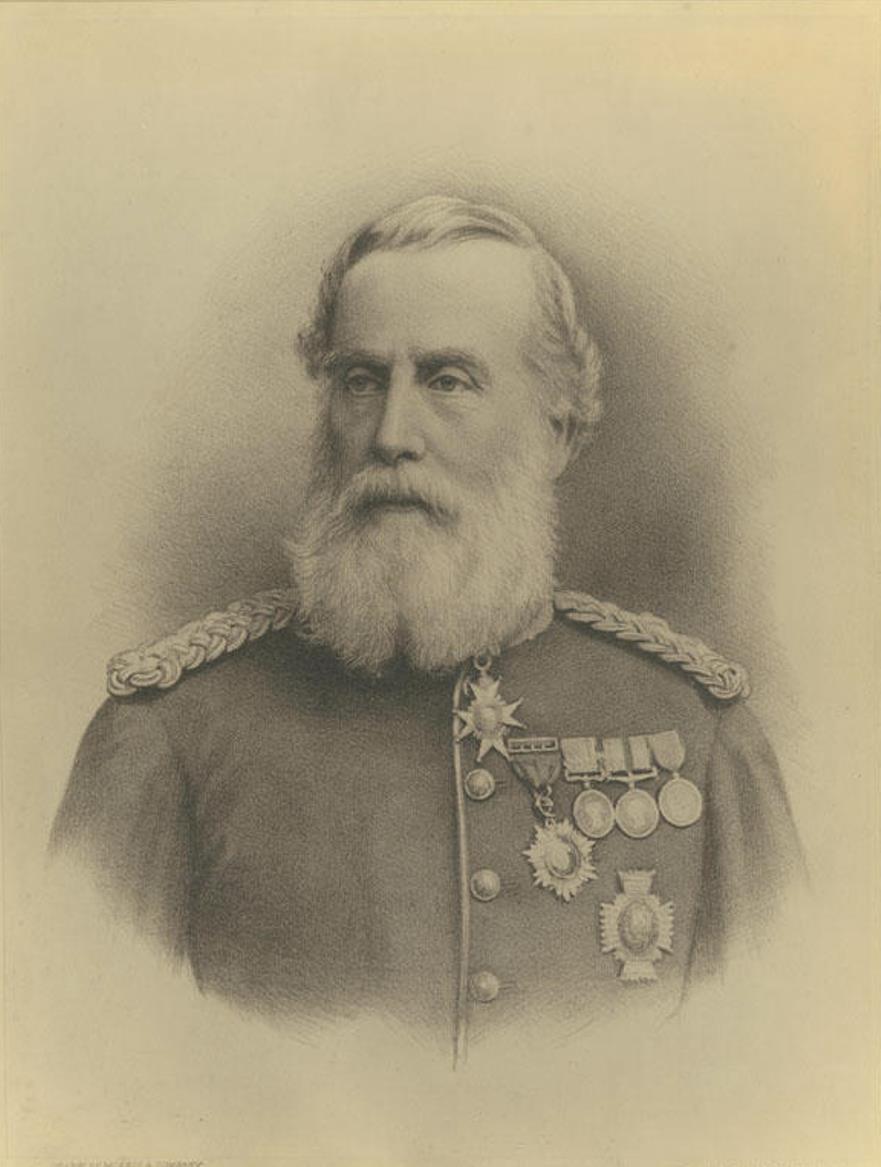
Henry James Warre was a British officer, traveler and artist.
Educated at the Royal Military College, Sandhurst, Warre began his service in British North America, including Canada, as adjutant (aide-de-camp) to his uncle, Sir R. D. Jackson, commander-in-chief of British forces. From 1845-1846, he traveled the country on a reconnaissance tour, visiting Oregon and British Columbia. Henry Warre later participated in the Crimean War, served as a colonel in New Zealand from 1861-1865, and made a sea voyage to the South Island.
Warre had a brilliant military career, rising to the rank of lieutenant general, commander of the Bombay Army. In 1881, while still in India, he retired and returned to London.
Henry Warre was a talented artist, and drew the surrounding vistas and landscapes in pencil and watercolor. He is best known for his books of colored plates, Sketches of North America and the Oregon Territory (1848) and Sketches in the Crimea (1856).
















